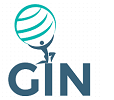Floating solar panels are new, cost-effective, and reliable solar energy-producing solutions, which are installed on water bodies to convert them into solar power plants. Green energy generated at these water reservoirs is used to power the pump on-site and in other applications, which helps in saving an immense amount of power. The world's first floating solar power plant was established in Aichi Prefecture in central Honshu, Japan. According to the World Economic Forum (WEF), 73 of the world's largest floating solar power plants are found in inland lakes and reservoirs of Japan.
The surging adoption of renewable energy, on account of the rising environmental pollution, will drive the floating solar panels market growth during the forecast years (2020–2026). The market revenue is expected to surge from $685.2 million in 2019 to $2,301.8 million by 2026. Governments and power producing companies across the world have initiated or are working toward initiating schemes and projects that promote the use of renewable energy, such as solar energy. For instance, in India, the National Thermal Power Corporation (NTPC) has recently commissioned the development of a 100 MW capacity floating solar power plant at Ramagundam in Telangana.
According to P&S Intelligence, Asia-Pacific (APAC) accounted for the largest share in the floating solar panels market in 2019, and it is expected to retain its dominance throughout the forecast period. This can be attributed to the soaring number of government initiatives that promote the adoption of solar panels in the region. Moreover, the burgeoning demand for low-cost energy, toughening environmental regulations, and increasing requirement for land for alternative purposes will also support the market growth in the foreseeable future.
Therefore, the escalating adoption of renewable energy and the growing need to preserve landmasses will propel the deployment of floating solar panels in the forthcoming years.

































